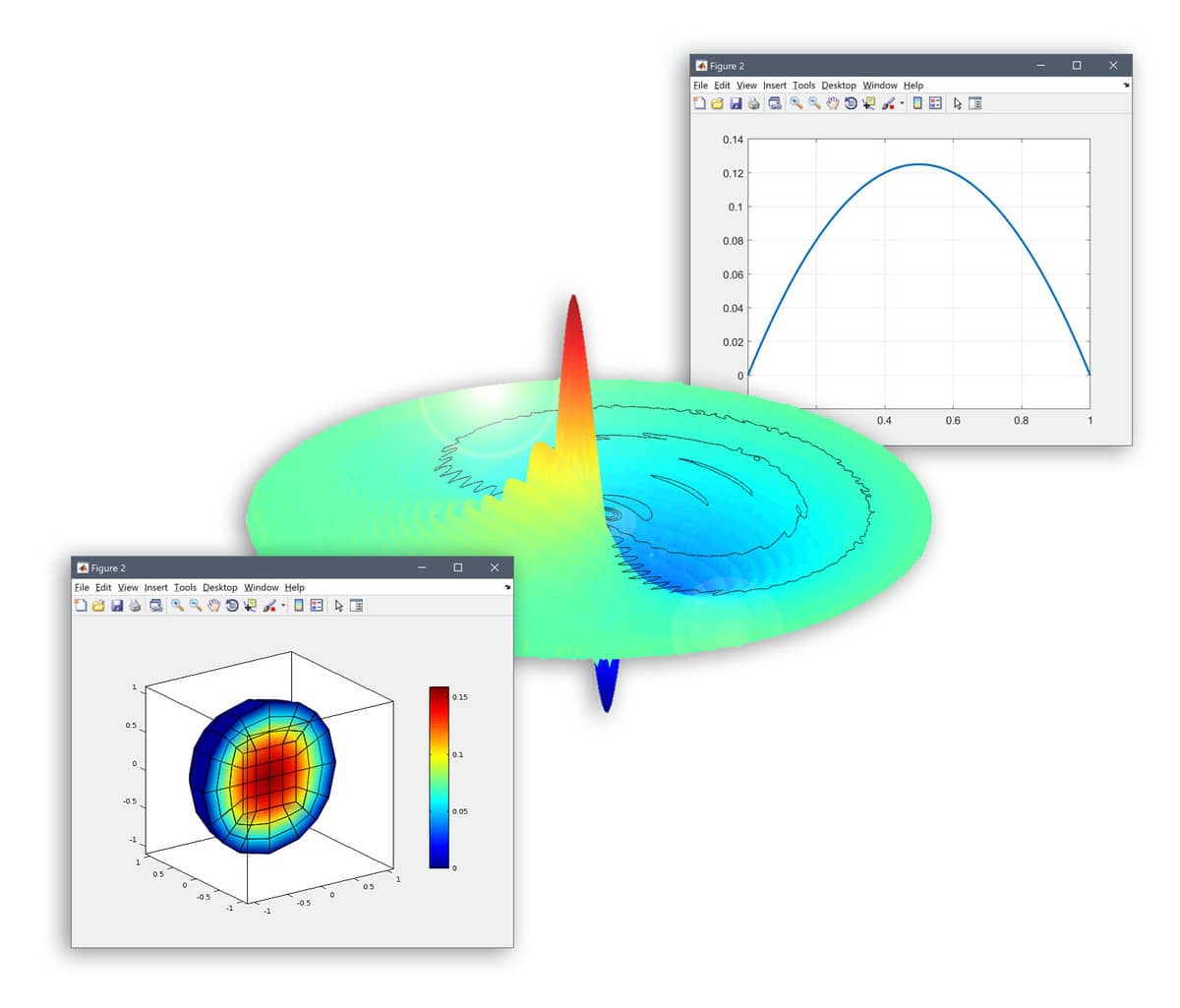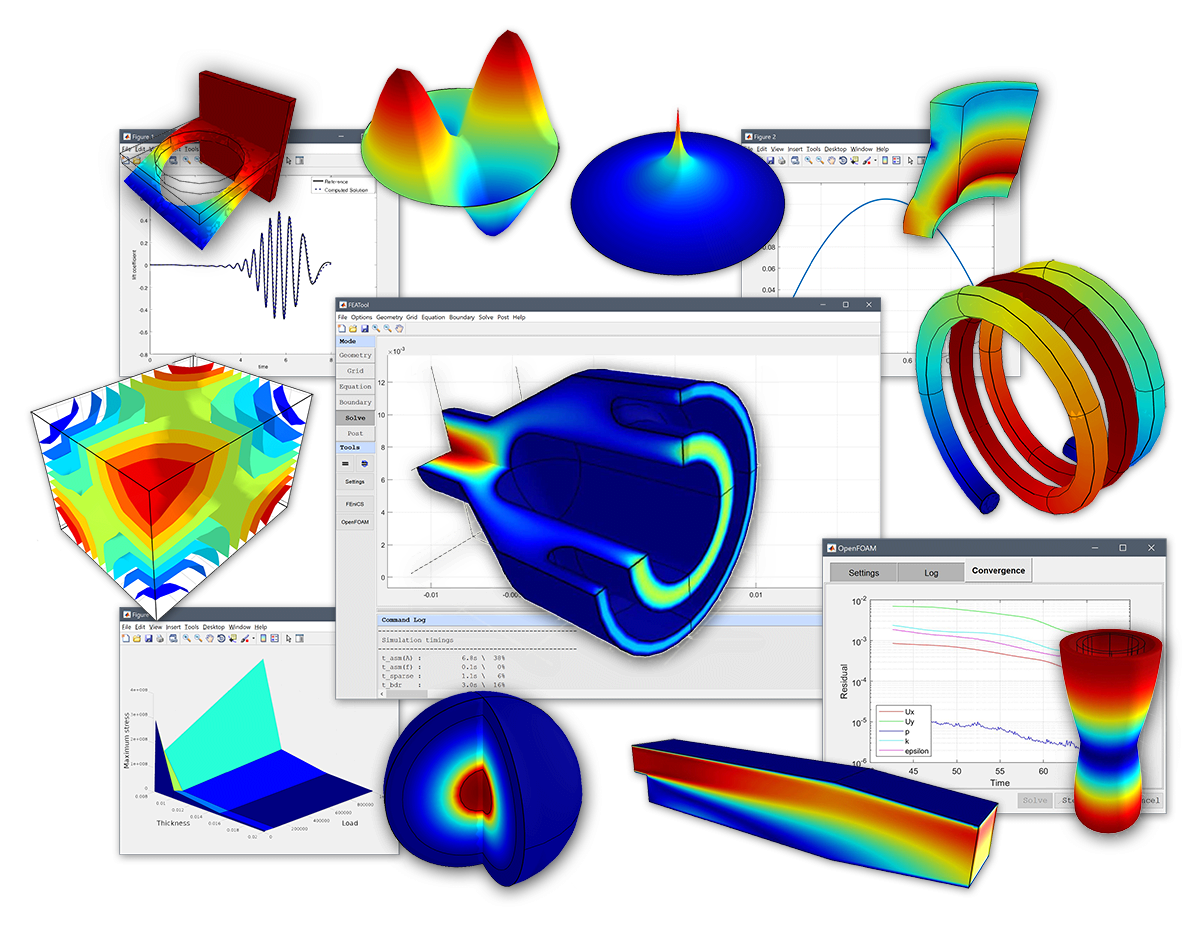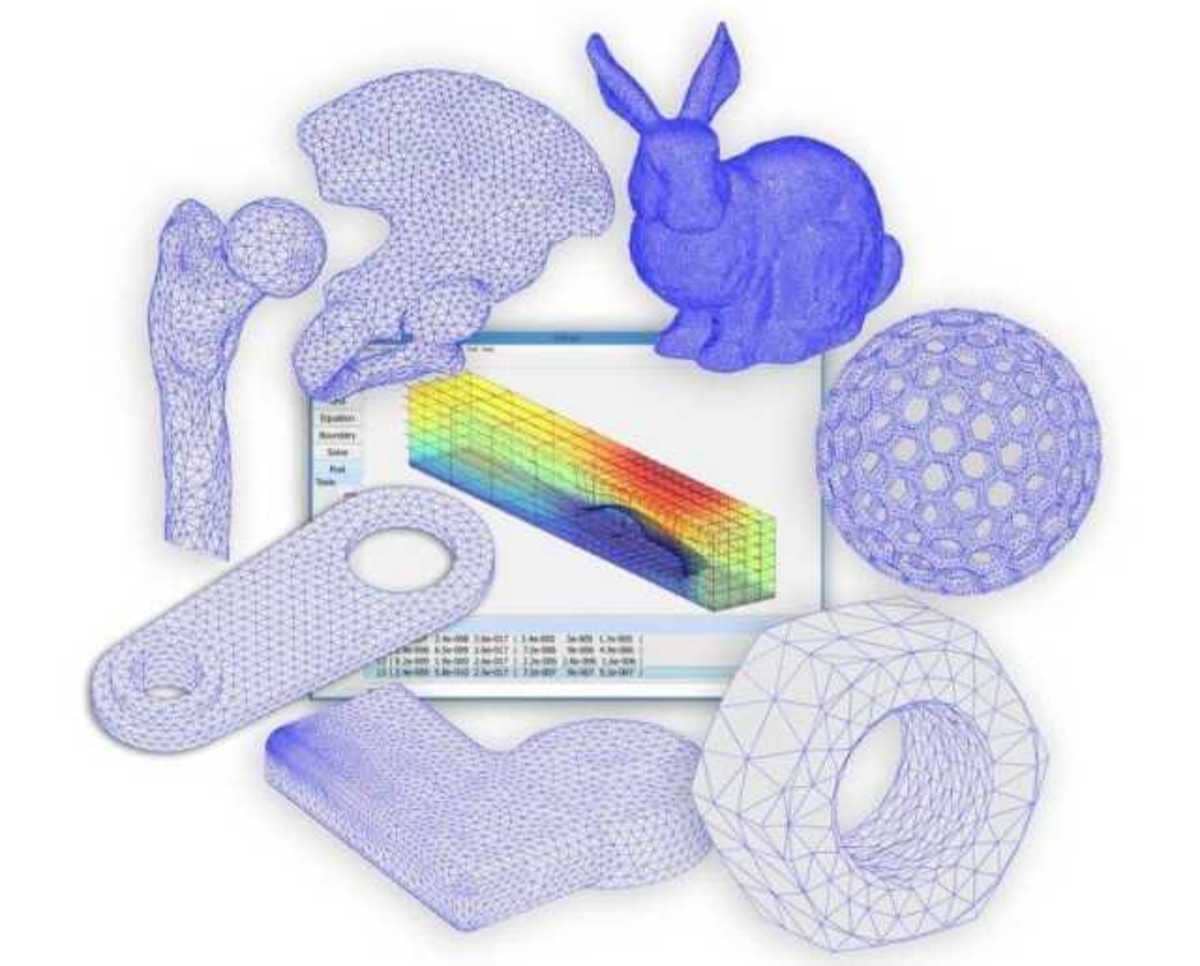Multiphysics
Multiphysics is commonly referred to as the process of computer simulation of coupled and interacting physical phenomena such as heat and mass transfer, fluid flows, structural stresses, and electromagnetic effects. This could for example be heat and stress generation due to friction in automotive brake systems, fluid flow and transport with reacting chemical species, temperature and stress variations due to electrical fields and many other applications.
Multiphysics simulations are increasingly becoming an essential part of Computer Aided Engineering (CAE), virtual prototyping, research and development (R&D), and product design fields. They not only save significant time and costs, but also make it possible to perform experiments and analysis in the computer that would otherwise be impossible or unsafe in real world experiments.
The FEATool Multiphysics software has therefore been specifically designed to make coupled physics simulations easy and accessible for everyone, beginners and advanced users alike. In addition to allowing for completely user defined models and (PDE) equations, the following physics and application areas are available as pre-defined equations with step-by-step tutorials to help you getting started right away.
Multi-Solver Simulation
A very unique feature of the FEATool Multiphysics software is that in addition to the built-in multiphysics solver, it features full integration and support for several specialized and state-of-the-art physics solvers, namely OpenFOAM and SU2 code for fluid dynamics (CFD) applications, and FEniCS for mixed finite element analysis (FEA) simulations.
The multi-simulation solver functionality allows for coupling and solving different types of physics with the most efficient and accurate solvers, all from within a single convenient GUI interface. The linked example couples the OpenFOAM solver, computing the flow field, with the built-in multi-physics solver which is used to calculate the transported temperature field for a tube-and-fin heat exchanger.
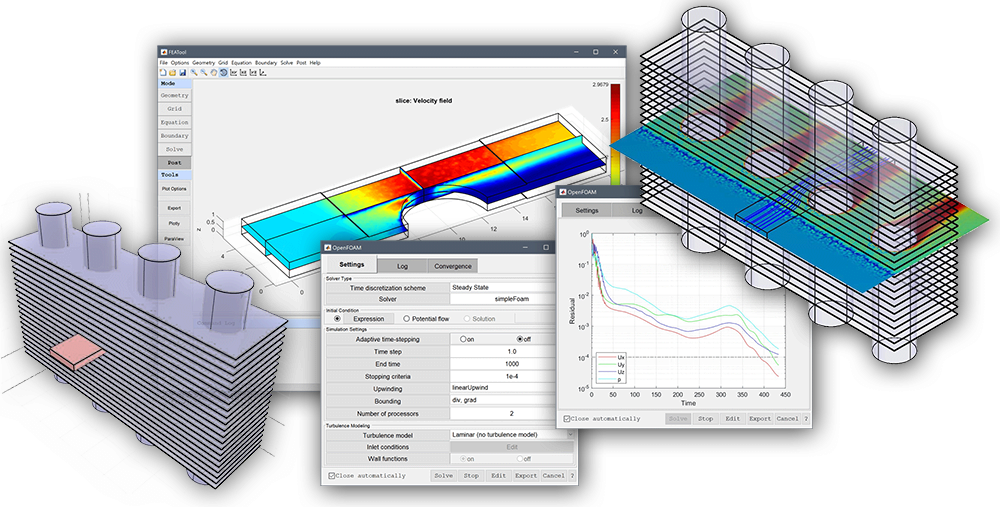
Heat and Mass Transfer
Heat transport by thermal conduction in solids and convection in fluids is modeled with the heat transfer equation. For multiphysics applications, the temperature field can be coupled to other physics such as structural mechanics applications for thermal stresses, or fluid flow to account for buoyancy effects.
Mass transfer is treated by the analogous convection, diffusion, and reaction equation to account for mass diffusion and chemical reactions. Full two-way multiphysics couplings are also sometimes present accounting for the convective transport of concentration fields by the fluid flow.
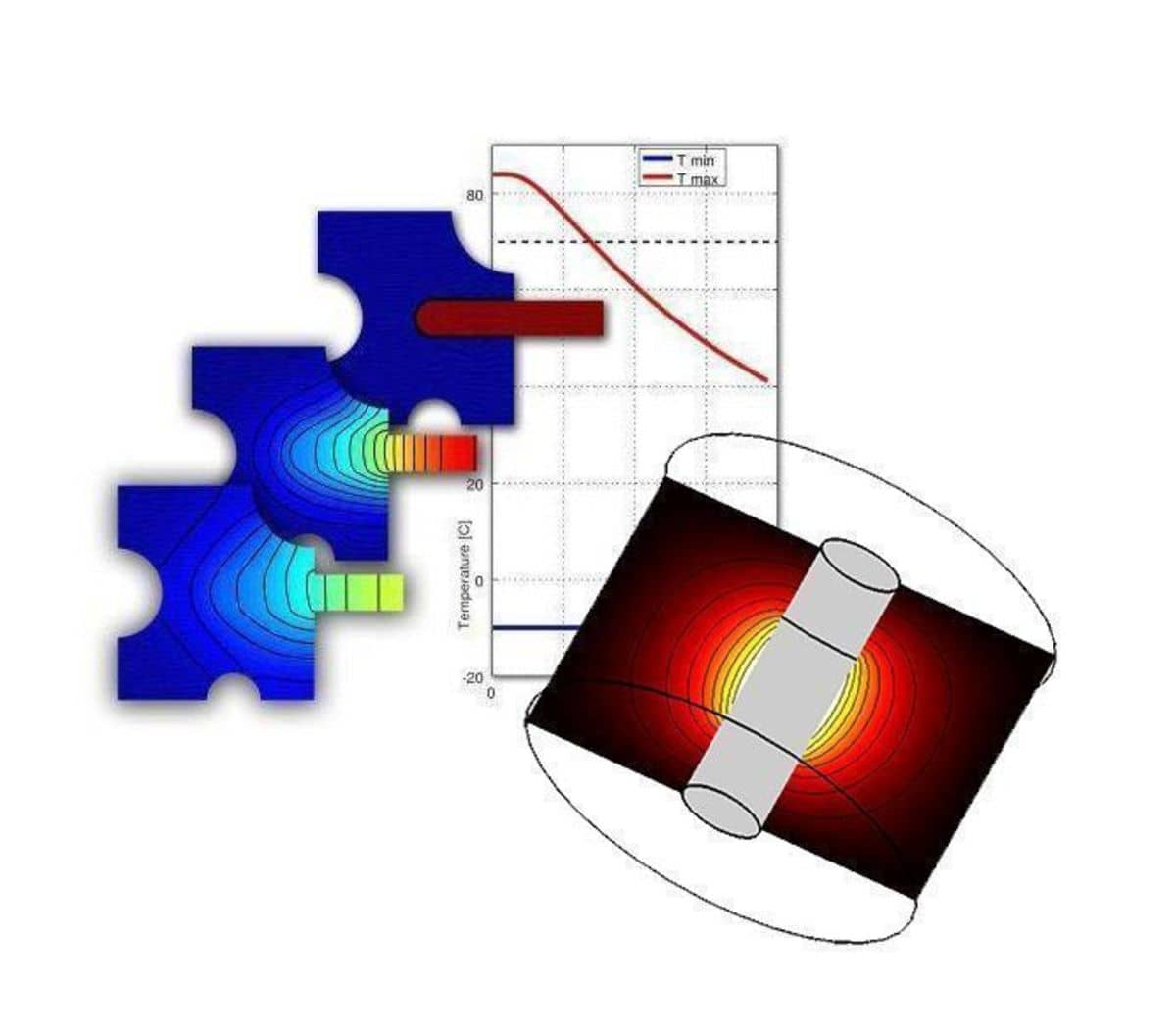

Structural Mechanics
Structural mechanics and mechanical engineering simulations are used to determine stresses, strains, displacements, and failure modes for objects and structures under varying load conditions.
Multiphysics simulations for stress-strain relations often also involve heating effects giving rise to temperature induced stresses, such as during braking procedures. Also fluid-structure interaction (FSI) whereby a fluid exerts significant forces on solid objects can often be found in pharmaceutical and bio-mechanical applications.
Fluid Mechanics
Computational fluid dynamics (CFD) simulations are typically used to model the behavior of fluids in motion. CFD application areas span everything from large scale aerospace, aerodynamic, geo and ocean engineering, to automotive, manufacturing and processing industry, and small scale bio and micro-fluidic applications.
In multiphysics applications the effects of fluid flow fields can often be very significant. For example, heat can be transported away by the fluid field such as in heat exchangers, chemical reactions might occur at significantly different rates in fluid stagnation zones, and fluids exert significant forces on and interact with surrounding objects such as in fluid-structure interaction applications.
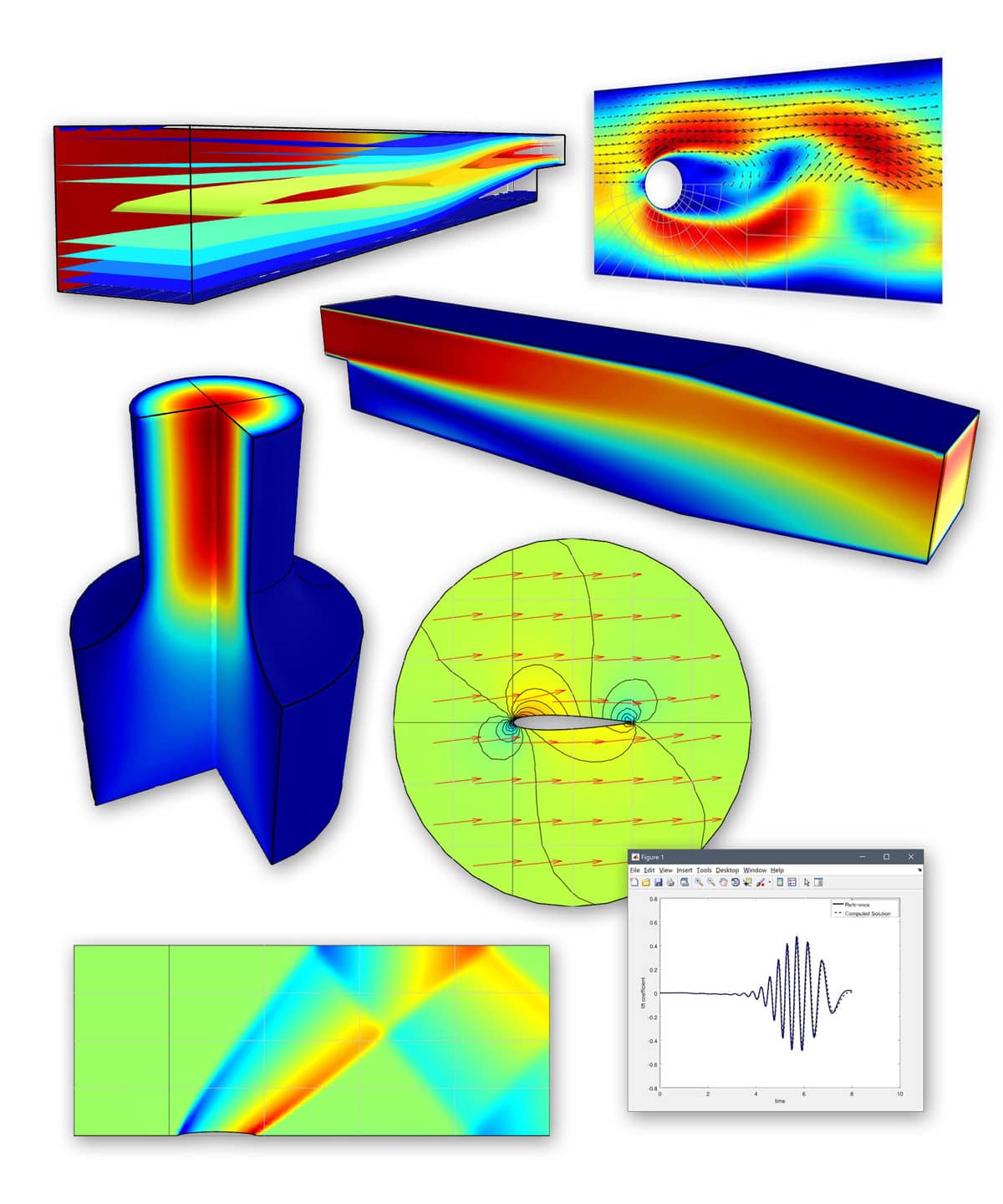
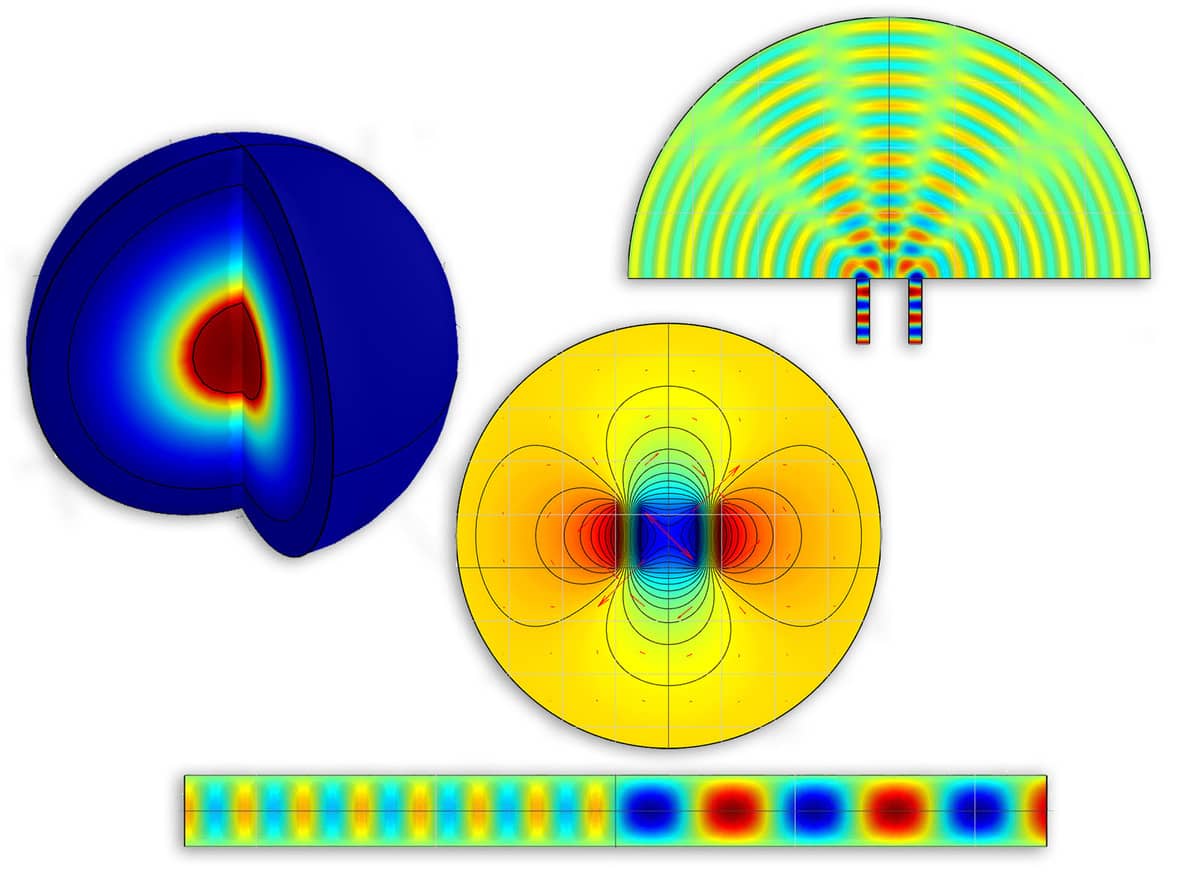
Electromagnetics
Electromagnetic forces and field effects as for example found in antennas, wave guides, magnets, and electrical components are typically modeled with different forms of Maxwell's equations.
In multiphysics applications electromagnetic fields can generate forces on conductive objects, and also give rise to resistive and inductive heating effects.
Partial Differential Equations
Partial differential equations (PDE) are typically the building blocks in continuum mechanics and multiphysics modeling applications. The governing equations for the application areas above can often be reduced to the a form of classic and prototypical PDEs such as the Poisson's, Laplace, wave, and convection, diffusion, and reaction equations.
The pre-defined physics modes in FEATool Multiphysics hides the work of defining PDEs and multiphysics couplings. These governing equation systems can then be coupled and automatically and efficiently solved together.
